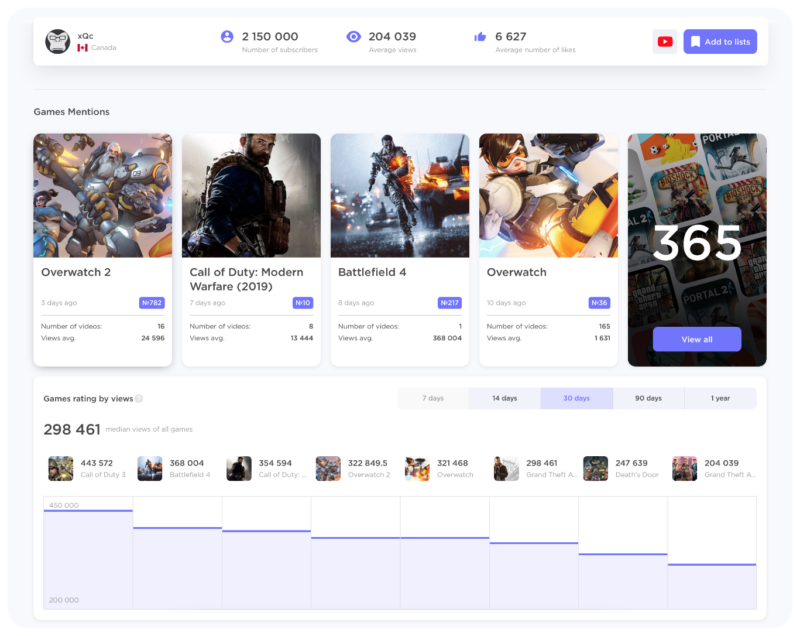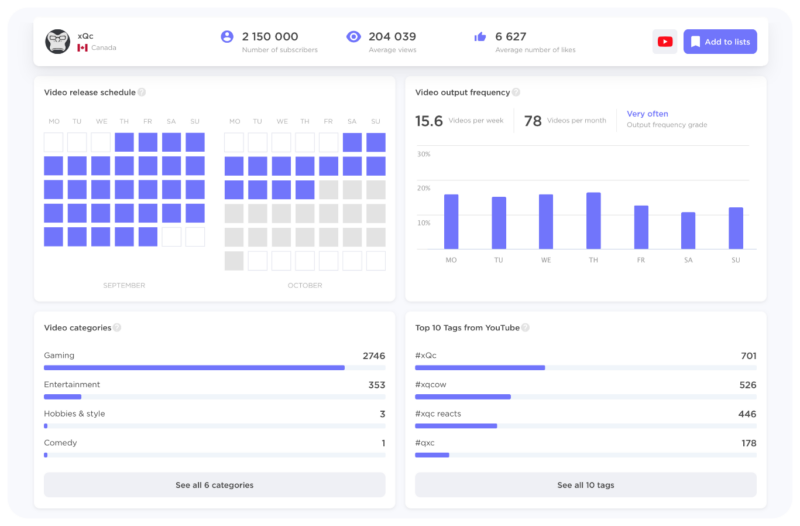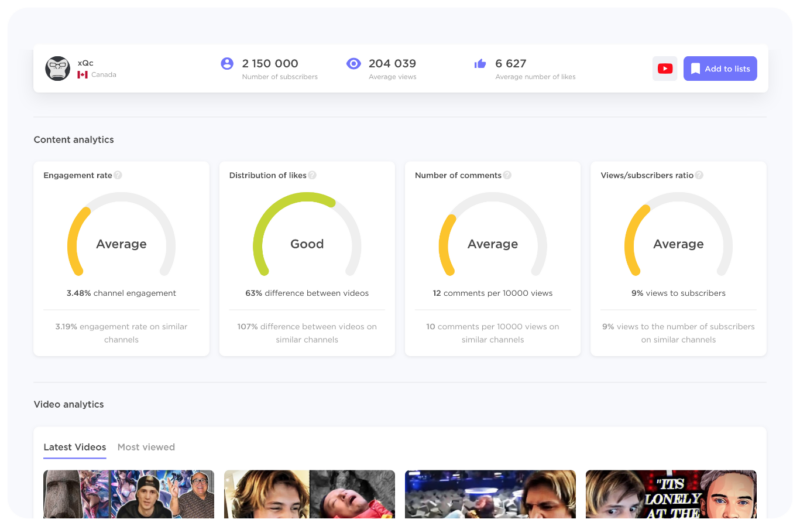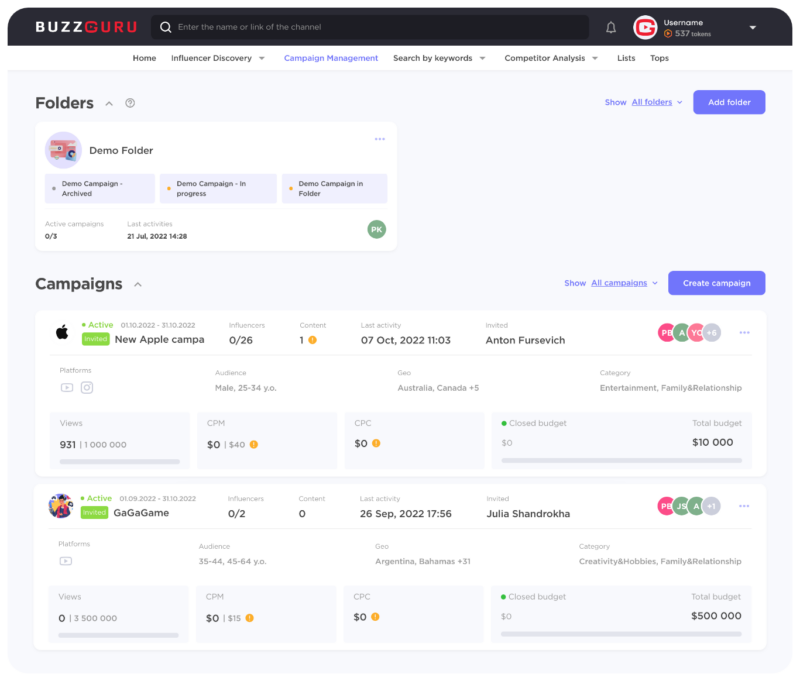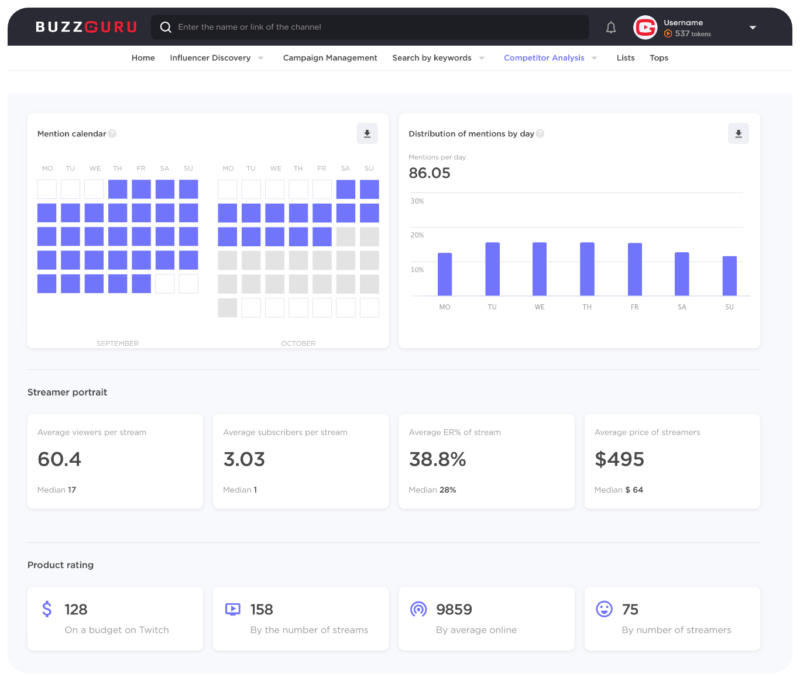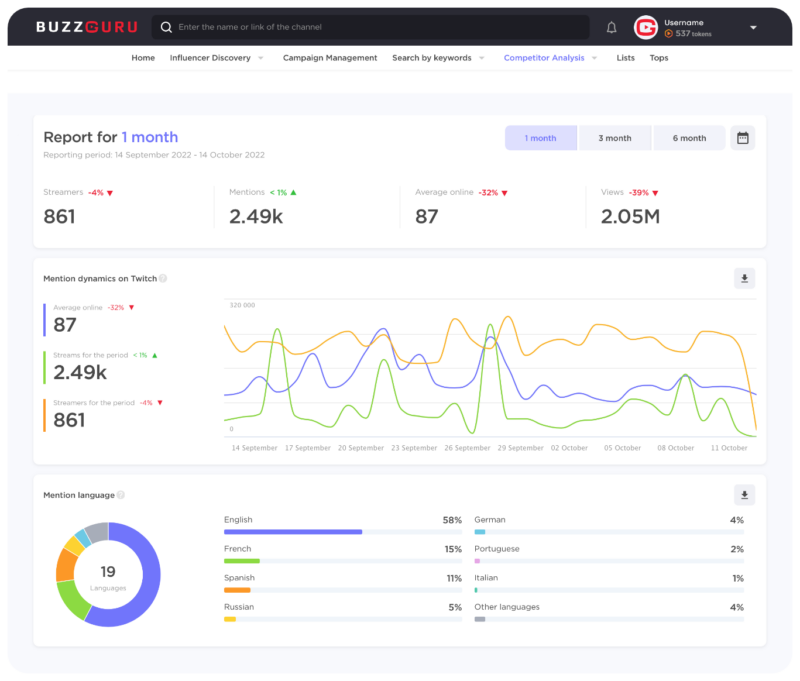
Overview
When we first reviewed BuzzGuru in November of 2021, we made a big deal about one surprising bit of information: there was no Instagram support. It’s not that we were surprised they didn’t include it; what really surprised us was how unnecessary Instagram was for BuzzGuru. The platform's focus was on gaming and mobile app brands, and Instagram just didn't seem like a place they needed to be. It worked with Twitch (of course), YouTube (also of course), and TikTok (super of course), and these are all channels that make sense for the market that BuzzGuru is trying to tap.
A year later, BuzzGuru has added crypto brands as a customer target, which also doesn't really necessitate having Instagram as a supported channel. But, they went ahead and added it anyway. It’s still the number one social media channel for influencer marketing, so why not?. And that's not the only thing that's changed on the platform.
Their database of more than 20 million influencers is now a database of more than 27 million influencers. And this database isn’t just the result of algorithms scraping the social web for stats. BuzzGuru sprang to life in 2017 as a global influencer marketing agency, during which time they’ve produced thousands of video collaborations and curated their own roster of relevant influencers. While algorithms play a part, there’s human experience backing this database, and for the right kinds of brands their pool of influencers is filling up a very deep well.
They've also added another element of intelligence, this one of the artificial variety. The AI is the power behind the influencer data analysis, a feature which is vastly improved since the last time we saw it—and it was already pretty good back then.
Finally, the platform has been rounded out with a campaign management module. Last year, we thought it was weird that BuzzGuru wasn’t an end-to-end solution, given that it was developed to be an in-house tool for a full-service marketing agency. It still isn't fully end-to-end, but it's a hell of a lot closer. And really, BuzzGuru’s target audience is better served by the competitor analysis module that’s been there since the beginning than, say, a more fully built-out CRM.
It’s clearly been a busy year for the BuzzGuru development team. Was it worth the effort? (Spoiler alert: yes.)
Summary:
Pricing
BuzzGuru’s pricing covers a wide range of monthly fees, suitable for small to large businesses. They have custom priced plans that offer different levels of access to certain features and analytics. For any in-depth analysis, you’ll need to redeem a token. There is a certain number of tokens that come with each plan, and you can buy bundles of them separately, as needed.
- Pro, $Custom/mo — Influencer search, content discovery, estimated pricing for influencers, influencer analysis.
- Scale, $Custom/mo — All of the above, plus campaign management, real time tracking, personalized reports, content library.
- Custom, $Custom/mo — All of the above, plus: competitor research, influencer lists, deeper competitive intel including their marketing budgets and campaign performance
Token Add-ons
Tokens can be purchased in bundles of 25, 40, and 100 on an as needed basis.
The Details
Logging into BuzzGuru brings you to the Discovery module. There's nothing revolutionary to be found here, but that's alright. This is neither the first nor the last platform to implement a discovery tool that allows you to search and refine your results based on filters. That said, two filters stand out here: Game Genre and the Games themselves. It’s a really obvious inclusion if your target audience is gaming brands, but then no one else has a target audience of gaming brands. Every other Search tool out there includes a filter for a “gaming” category, but makes no distinction between Fortnite and FIFA and Call of Duty, for example. These are vastly different games with very distinct players. Not all gamers look alike, Boomer.
It's when you head into the profile of any influencer where BuzzGuru really starts to shine. You get the standard metrics about subscriber count, average views, engagement rate, and even an estimate of the cost to work with them. A let down in this section is the data about the influencers audiences. For channels that are not Instagram, you're not even getting demographics, much less psychographics. You're really only seeing the number of followers they have and the growth or decline of that over time. If you’re looking at Instagram profiles, you get it all: audience credibility, geography, languages, gender, brand affinities, and interests. On TikTok? You get some of that. For YouTube and Twitch? None of that. On the one hand, we get why these things aren’t included as metrics for YouTube, Twitch—it's because you can't get them from YouTube or Twitch. On the other hand, they did go through the trouble of developing an AI to analyze data; extrapolating info about the audiences is the perfect use of AI.
On the much more useful side is the Content Library, which keeps a local copy of every image and video from every account indexed by the platform. You can drill down into any piece of content without ever leaving the BuzzGuru interface. And you'll be able to view the content as well as analyze its performance.
From there, it’s a very welcome rabbit hole of information and analytics about their videos as well as the brands and games they’ve mentioned. You can find out the history of dates and times they tend to post, the categories their content falls in, and frequently used hashtags. When you check out brand mentions, it’s not merely a list of things they’ve said. All the videos and their data are indexed within BuzzGuru, so you just click through the listing to the video entry. The video itself is embedded right in the page, along with the description that was published along with it. Sitting amongst all that are some informational stats: Views, Likes, Dislikes, Engagement Rate. The same goes for mentions of apps and games.
As you're searching, picking, and choosing from among all the influencers indexed on the platform, you can use BuzzGuru’s list feature to organize groups of influencers together. This makes it easy to share your recommendations for particular campaign, or a list of up-and-comers you want your colleagues to check out. You can also just use a list as the basis for creating a new campaign. Create a campaign off of any list, you'll be brought to the campaign management module where you can set up the parameters of a new social marketing push.
The rest of the campaign manager works just like any other marketplace campaign manager. You create a brief, you publish that brief or you just invite influencers directly, and then start activating influencers and approving content. Once posts start going live, BuzzGuru ingests all the data about how they're performing onto the platform. Everything is displayed in a spreadsheet-like grid, which is highly customizable. You can select from a number of columns to display—like Average views, average likes, and format—and you can arrange those columns in any order you want. Regardless of how you arrange it, clever use of color coding makes the job of understanding each influencer’s status a lot more manageable. The whole module is designed to make quick work of reading, analyzing, and understanding how your campaigns are performing.
If you're looking to do competitive analysis, you'll find that it works a lot like the way the influencer search modules do. Instead of searching for influencers, though, you're looking for games, apps, or any brand accounts that you're interested in looking at. The results you get back will also look a lot like the influencer data, but an argument could be made that these results are even more valuable. Influencer analytics can tell you how relevant a given influencer is, but learning the same things about a competing company can teach you what will and what won't work for you, marketing wise.
For example, if you see steady audience growth over time for an influencer, it tells you that they’re probably not buying subscribers or doing follow-for-follow type shenanigans. Good information, but not entirely actionable. If you see steady growth for your competitors' audience over time, you can learn much more. Pick a time period where growth is strong and you can start looking at the videos they made or collaborated on during that period. Find out who the influencers were that they worked with, and get an idea of the strategies they’re employing. What hashtags are they using? Are they doing TikTok challenges? Which of these tactics is having the greatest impact? You’ll also see ratings and rankings of games and apps to get an idea of how they’re actually performing in the marketplace—not just in the marketing. BuzzGuru customers will likely spend a great deal of time with the software doing competitive analysis, and for good reason.
Conclusion
Over the last few years we've seen influencer marketing platforms splinter out into more niche areas. There are platforms that are purely about analytics; it's all about research and business intelligence with those. And there are platforms that are catering to specific business verticals like, say, gaming and mobile apps. Or crypto brands.
Sometimes, this is just a matter of finding an underserved market and building a product to solve its problems. For BuzzGuru, though, the competitive research tool and the specific markets it targets are natural results of the work BuzzGuru has been doing as an agency since its inception. As an agency, that's where their interests lie, and as a software developer? That's where their expertise is. Were it not for these dual focuses, BuzzGuru would be just another influencer marketplace in a crowded field of influencer marketplaces. By zeroing in on just a few types of brands, they instead created a purpose-built influencer marketing platform with few, if any, competitors. Relevant brands will want to use it, maybe for no other reason than it’s the only solution out there for them right now. It should help them to know that it’s excellent software, too
BuzzGuru
-
Features
-
Ease of Use
-
Reporting

